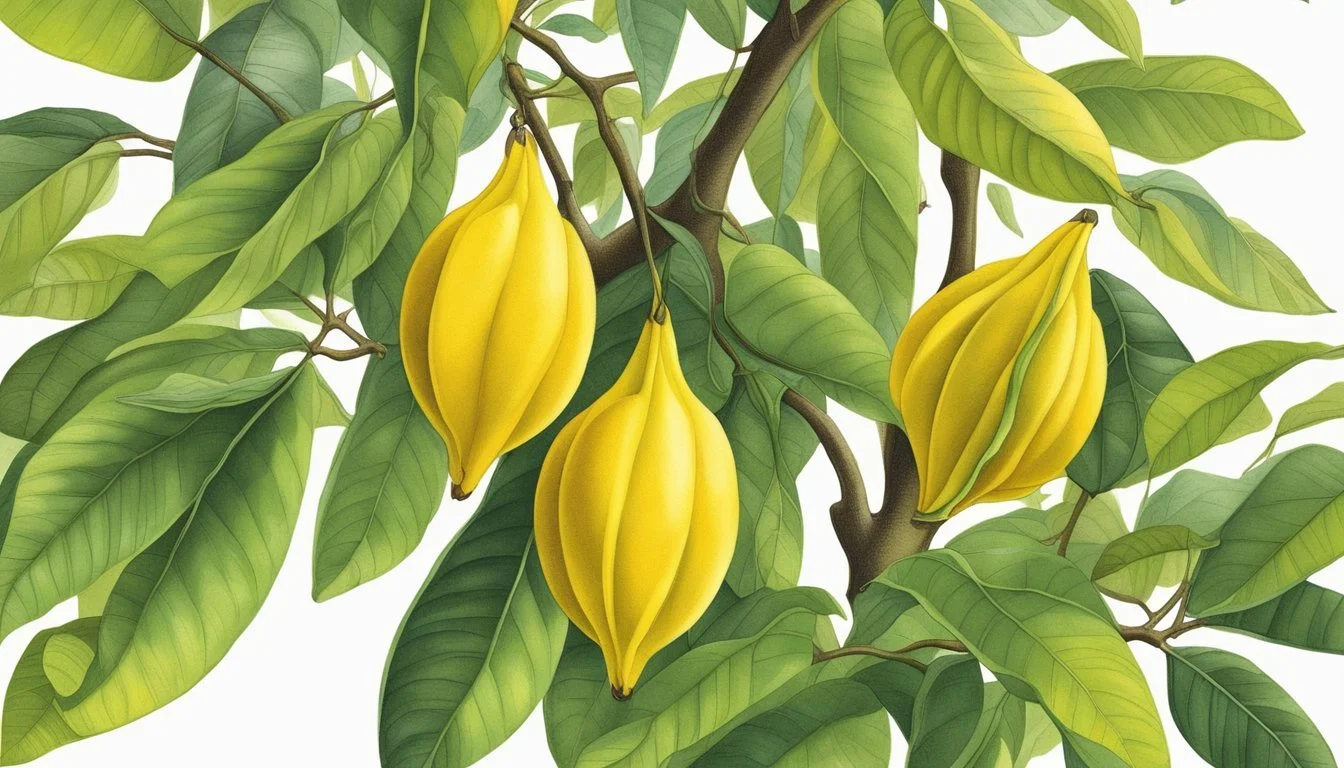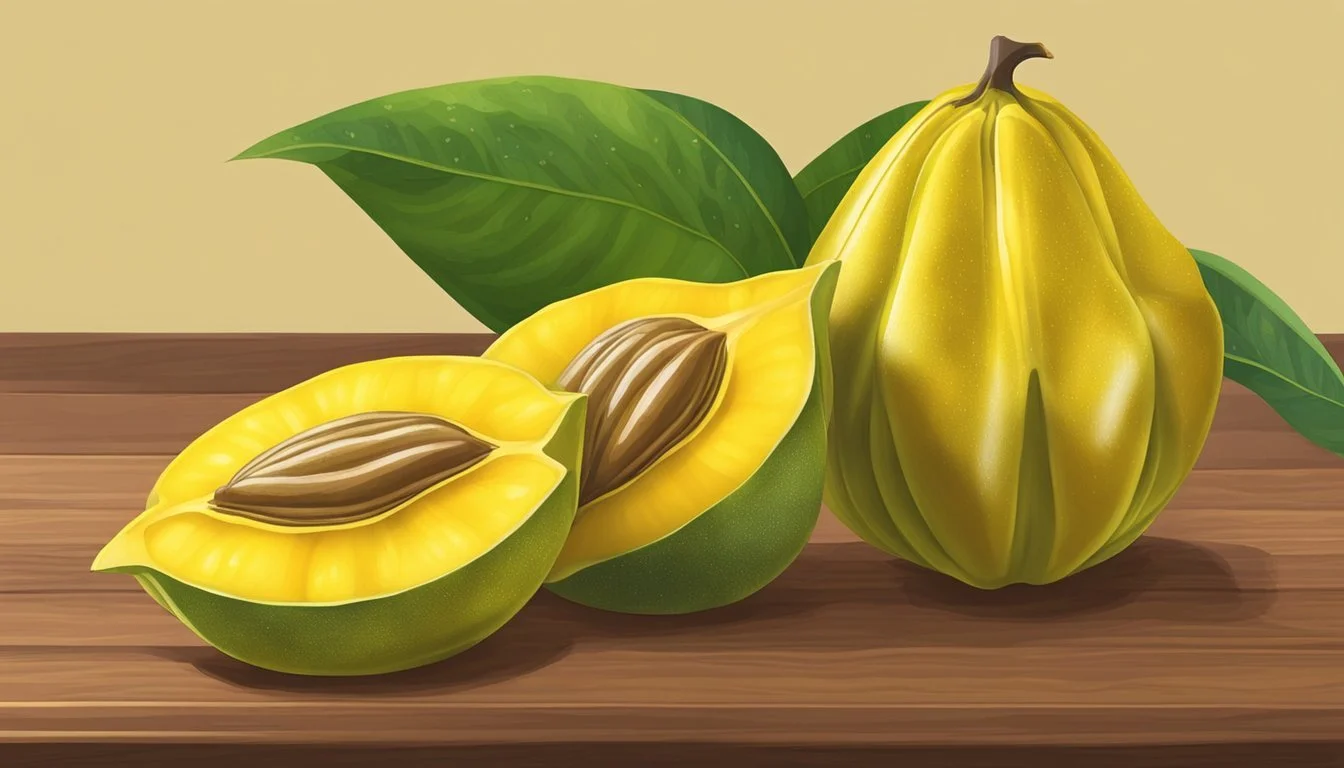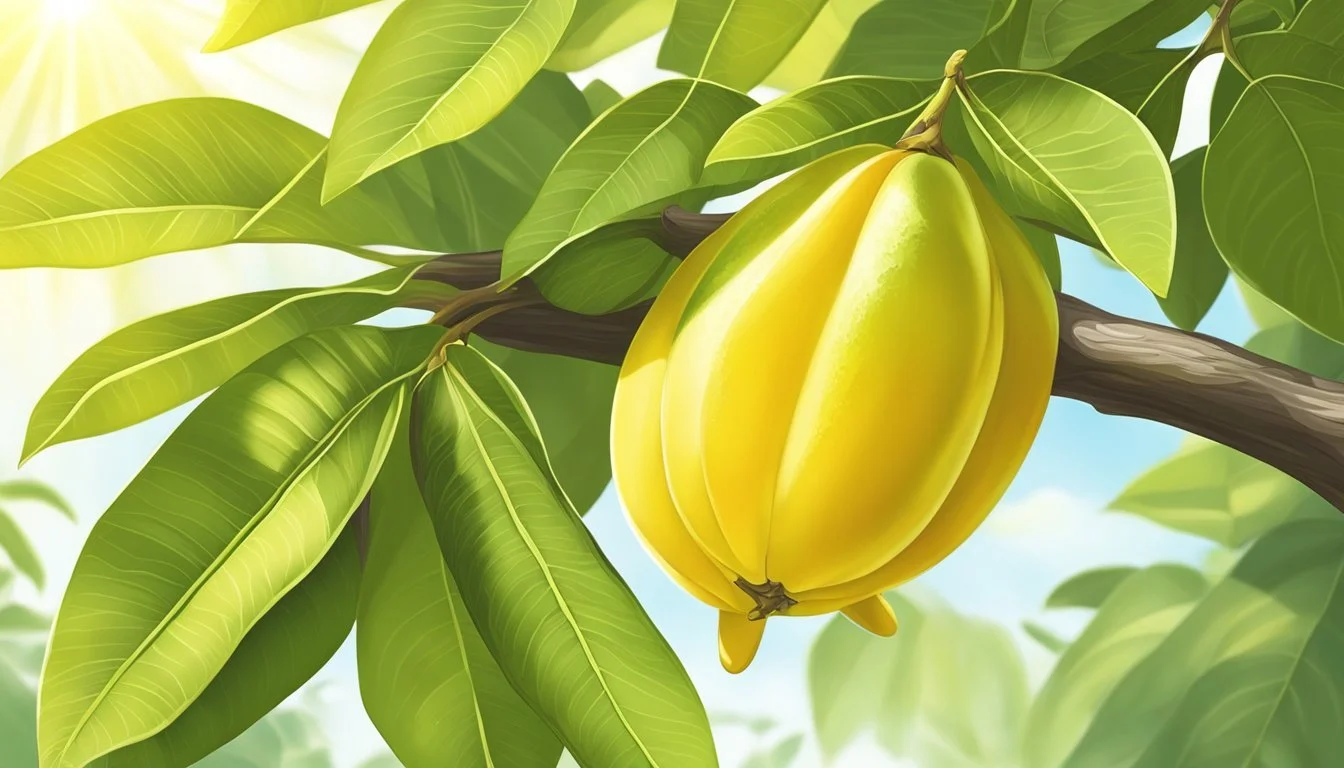How to Tell if a Carambola is Ripe
Identifying Peak Sweetness and Texture
Carambola, commonly known as star fruit, offers a delightful blend of sweet and tart flavors when perfectly ripe, making it a favorite among tropical fruit enthusiasts. Knowing when a carambola is ripe is crucial for experiencing its optimal taste and texture. Ripe star fruit not only provides an exceptional eating quality but also ensures that none of its nutritional benefits are overlooked.
As the harvest season approaches, consumers and cultivators alike should be aware of the signs that indicate a ripe carambola. The fruit's ripeness can be gauged through visual cues such as a vibrant yellow color, slightly browned edges, and a glossy sheen, as well as tactile assessments like a firm yet yielding texture. Understanding these indicators can greatly enhance one’s ability to select or harvest star fruit at its peak condition.
Key Takeaways
Selecting a ripe carambola involves looking for a bright yellow color with a glossy finish.
A ripe star fruit should feel firm with a slight give upon gentle pressure.
Appropriately storing and handling carambola will maintain its flavor and prolong freshness.
Identifying Ripe Carambola
Selecting a ripe carambola, commonly known as star fruit, requires careful observation of its color, texture, and overall physical characteristics. A ripe star fruit promises a sweet and tangy flavor profile suitable for fresh consumption or culinary use.
Color and Appearance
A ripe carambola typically exhibits a bright yellow hue with a slight golden sheen. It should possess no green on the skin, as this indicates under-ripeness. The tips of the ribs may turn brown, a natural indication of ripeness, without affecting the fruit's taste. Its skin should have a glossy luster, contrasting with the dull and dry appearance of unripe fruits (What wine goes well with fruits?).
Texture and Firmness
The texture of a ripe star fruit should feel firm yet yield slightly to gentle pressure. It should not be mushy or shriveled, which can be signs of overripeness or spoilage. Wrinkled skin is a common feature of carambola that is past its prime. The surface of the star fruit should be smooth without any brown spots that can signal bruises or decay.
Size and Weight
While size can vary, a ripe star fruit should feel solid and heavy for its size, indicating juiciness and a dense flesh. The weight of the fruit is a reliable indicator of its water content and overall ripeness. A fruit that feels light may lack flavor and succulence.
Carambola Taste Profile
Understanding the taste profile of carambola, commonly known as star fruit, helps one appreciate its role in culinary arts. This section delves into the unique flavor variations of the fruit, indicators of sweetness signaling ripeness, and its versatile culinary applications.
Flavor Variations
Carambola offers a spectrum of flavors, often influenced by the variety and ripeness of the fruit. Generally, it boasts a distinct combination of citrus, apple, and grape elements. Two primary types are noted:
Sweet varieties: Exude a mild sweet-tart flavor reminiscent of tropical and exotic fruits.
Tart varieties: Present a sharper, more sour profile suitable as a refreshing accompaniment or garnish.
Sweetness Indicators
A ripe star fruit is a balance of sweetness and acidity. To determine ripeness and anticipate sweetness, look for:
Color: Vibrant yellow with light tinges of green.
Texture: Firm, yet yields to gentle pressure.
Fragrance: A ripe carambola emits a fragrant, sweet aroma.
Wings: Brown edges on the ribs indicate a higher sugar content.
Taste and Culinary Uses
The juicy nature and tropical flavor of star fruit make it a versatile ingredient:
Fresh Consumption: Eaten out of hand, highlighting its refreshing zest.
Salads: Adds a sweet-tart dimension, complemented by its high Vitamin C and fiber content.
Garnishes: Ripe star fruits' vibrant color and unique shape enhance plate presentation.
Cooking: Incorporated into savory dishes, contributing a subtle tropical fruit flavor.
Storing and Preserving
Proper storage is key to maintaining the freshness and extending the shelf life of carambola, commonly known as star fruit. Strategies differ for short-term and long-term preservation.
Short-term Storage
For those intending to consume star fruit within a week, short-term storage is ideal. A ripe star fruit can be kept at room temperature on the counter for a couple of days. If the fruit is not consumed within this period, it should be placed in the refrigerator to slow down the ripening process. Refrigeration can keep star fruit fresh for up to a week. It is best to store it in a plastic bag with perforations to allow for air circulation, preventing moisture accumulation which can lead to faster degradation.
Counter (1-2 days):
Place ripe star fruit at room temperature.
Monitor fruit for any signs of over-ripening.
Fridge (up to 1 week):
Store in a perforated plastic bag.
Store away from ethylene-producing fruits to prevent over-ripening.
Long-term Preservation
For an extended shelf life, freezing is the most effective long-term preservation method for star fruit. Firstly, wash and slice the fruit, removing any seeds. Pureeing the fruit before freezing can help in maintaining its texture and flavor. The puree should be poured into ice cube trays and frozen for at least 24 hours. Once frozen, transfer the cubes to an airtight freezer bag or container to prevent freezer burn and flavor absorption from other foods. Clearly label the bag with "Star Fruit" and the date of freezing. Frozen star fruit can typically be used for up to three months.
Freeze (up to 3 months):
Wash and slice the fruit, removing seeds.
Puree and pour into ice cube trays to freeze.
Transfer frozen cubes to an airtight container or freezer bag.
Label with the name and date before storing.
Harvesting and Purchasing Tips
Knowing the precise moment to harvest carambola and the attributes of quality fruit when purchasing is essential to enjoying the best flavor and texture that star fruit has to offer.
When to Harvest
Carambola, commonly referred to as star fruit, should be harvested when it transitions from a green to a vibrant yellow or golden color. In regions where star fruit is common, such as Southeast Asia, Indonesia, and Florida, the ideal harvesting season typically falls in late autumn and winter. It is recommended to harvest in the morning, when the temperature is cooler and the fruit is crisp. Signs of a ripe star fruit are:
Bright yellow to golden hue
Slight give upon gentle pressure
Firmness with a bit of weight to the fruit
Brown edges at the tips of the ribs indicate full ripeness
Gardeners should note that the fruit will continue to ripen after being picked, especially if harvested when they display a pale green coloring just beginning to turn yellow.
How to Buy Quality Carambola
When purchasing carambola at the market, there are several noticeable signs that indicate a ripe and quality fruit. Buyers should look for star fruit with:
Vibrant, uniform yellow coloring, without significant green spots
Smooth skin with a shiny appearance
Firmness to the touch, suggesting the fruit is ripe yet crisp
Heaviness for its size, which could be an indicator of juiciness
Be cautious of overripe fruit, which may have brown spots or feel mushy. Selecting pieces with the right attributes will ensure a sweet, tart flavor akin to a combination of apple, grape, and citrus notes that a ripe carambola is known for.
Health and Nutrition
Carambola, commonly known as star fruit, is not only a unique tropical delight with its star shape but also packs a punch in terms of nutrition. It is particularly noted for its vitamin C and fiber content while offering a range of other beneficial nutrients.
Nutritional Benefits
Vitamin C: A single medium-sized star fruit can provide a significant portion of the recommended daily intake of vitamin C, which is pivotal for immune function and skin health.
Fiber: With about 2.5 to 4 grams of dietary fiber per fruit, star fruit contributes to digestive health and may aid in maintaining blood sugar levels.
Potassium: It's a good source of potassium, a mineral essential for heart health and muscle function.
The fruit carries a variety of other vitamins and minerals that collectively enhance its profile as a healthful choice. Its antioxidants contribute to its nutritional benefits, offering protective functions for the body’s cells.
Dietary Considerations
While star fruit is nutritious, individuals with kidney issues should exercise caution: the fruit contains oxalates, which can affect kidney health and function. For those with existing kidney problems, the oxalates in star fruit can be harmful, potentially leading to adverse health effects.
People with a history of kidney stones may need to limit or avoid consumption due to the oxalate content, which can contribute to stone formation.
It's also noteworthy that the edible seeds and the rest of the fruit contain sugar. While the sugar content in star fruit is not excessive, it should be consumed in moderation, especially by those managing their sugar intake.
Incorporating Into Recipes
Selecting a ripe carambola is only the beginning. The true versatility of star fruit shines when incorporated into both sweet and savory dishes. Its tender, edible flesh can bring a unique flavor and visual appeal to a variety of recipes.
Dessert Recipes
The star-shaped presentation makes star fruit a natural garnish for desserts. When sliced, it can be layered atop tarts or used in fruit salads for a striking visual effect. For desserts:
Tart: Place thin slices of star fruit on a pastry crust, sprinkle with sugar, and bake until caramelized.
Smoothies: Blend ripe star fruit with other fruits to create a balanced, tropical-flavored smoothie.
Star Fruit Chips: Thinly slice star fruit, bake until crispy, and dust with sugar.
Recipes like star fruit tart with kiwi and mango blend the tangy taste of the star fruit with the sweetness of other fruits, creating an exquisite dessert experience.
Savory Cooking
In savory dishes, star fruit can add a sweet and sour dimension. It complements the tang of salads and the depth of stir-fries. For savory cooking:
Salad: Add fresh star fruit slices to a salad for a crisp, refreshing bite.
Stir-fries: Incorporate chunks of star fruit into stir-fries for a burst of tanginess.
Garnish: Use star fruit slices as an aesthetic and flavorful garnish on cooked dishes.
If seeds are present and desired to be removed, they can easily be taken out before adding star fruit to culinary creations. The inclusion of carambola elevates the taste and presentation of both sweet and savory dishes.
Cultivation and Care
Carambola, commonly known as star fruit, thrives in warm climates and requires specific conditions and care for successful growth and fruit production. Here, effective cultivation practices and pest management are paramount to ensure a lush, bountiful harvest.
Growing Conditions
The carambola tree, a native to the tropical regions of Southeast Asia, now finds its roots well-established in areas like Florida and India. It requires a warm climate, with optimal temperature conditions between 68°F and 95°F for proper growth. These trees are highly sensitive to frost and need protection from cold weather. USDA hardiness zones 9-11 are ideally suited for star fruit cultivation.
Planting should be done in areas receiving full sunlight, and the soil must be well-draining to prevent issues like root rot. Regular irrigation is crucial, but gardeners must avoid over-watering. Trees also benefit from a light application of fertilizer every 60-90 days until they are established, especially if the soil is low in fertility.
Dealing with Pests and Diseases
Carambola trees are susceptible to various pests and diseases which can affect different stages of ripeness and the quality of the pulp. Common pests include fruit flies, which can be deterred by using eco-friendly traps or pesticides. Regularly checking the trees for signs of disease such as anthracnose or leaf spot is crucial for maintaining tree health. Safe and regulated use of fungicides may prevent or alleviate fungal infections. Gardeners should employ integrated pest management (IPM) strategies that combine cultural, biological, and chemical controls to manage pests and diseases effectively.





